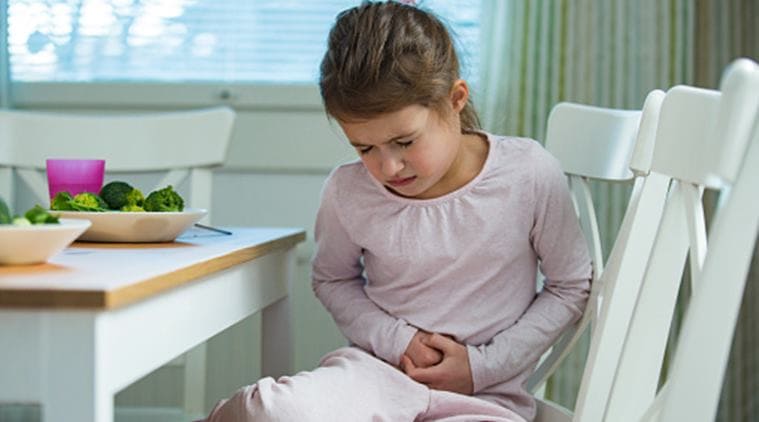 Coming in contact with an infected person or by eating contaminated food and water may make one experience chills, fever, nausea, vomiting, diarrhoea, aches, and even pains. (Source: Getty Images/Thinkstock)
Coming in contact with an infected person or by eating contaminated food and water may make one experience chills, fever, nausea, vomiting, diarrhoea, aches, and even pains. (Source: Getty Images/Thinkstock) COVID-19 presents itself with various symptoms like fever, dry cough, and headache. But these symptoms are also common in people who have stomach flu, or any gastrointestinal issues (GI) like nausea, vomiting, and diarrhea. So, how does one determine the difference? Indianexpress.com reached out to medical experts to understand more about stomach flu, which is also known as and the precautions and treatment for the same.
What is gastroenteritis?
Viral gastroenteritis can be termed as an intestinal infection accompanied by watery diarrhea, abdominal cramps, nausea, fever, and vomiting. “This infection can be a matter of concern during winters. You will also be shocked to know that it can be life-threatening for infants, older adults, and people with a compromised immune system. Hence, it is essential to keep stomach flu at bay by adhering to vital tips like hand washing and avoiding cross-contamination of food,” said Dr Suresh Birajdar, consultant paediatrician and neonatologist, Motherhood Hospital, Kharghar, Mumbai.
What are the causes?
Stomach flu is caused by norovirus, which is also known as the winter vomiting bug. “It can be caused due to coming in contact with an infected person or by eating contaminated food and water. One may experience chills, fever, nausea, vomiting, diarrhoea, aches, and even pains,” he said.
“It may spread to people in confined spaces; which means that transmission from one-person-to-other is also possible. Another cause can be rotavirus. Adults who are infected with rotavirus will not showcase symptoms but still may pass it on to others,” added Dr Birajdar.
How is stomach flu different from COVID-19?
 Here’s what to know about stomach flu. (Source: Getty Images/Thinkstock)
Here’s what to know about stomach flu. (Source: Getty Images/Thinkstock)
Almost 20 per cent of COVID-infected patients are reporting GI symptoms like diarrhoea with no apparent lung issues, said Dr Monika Jain, chief of gastroenterology and hepatology, Sri Balaji Action Medical Institute. Agreed Dr Sukrit Singh Sethi, consultant, gastroenterology and hepatology, Narayana Hospital Gurugram, who shared that a recent study published in the American Journal of Gastroenterology noted how diarrhoea commonly occurs in people with COVID-19, with 19.4 per cent of the subjects experiencing diarrhoea as their first symptom. Additionally, researchers at Stanford University found that up to 30 per cent of patients with mild COVID-19 had symptoms affecting the digestive system.
“If the patient comes with COVID symptoms in the form of cough, sore throat etc., followed by GI symptoms, then COVID is likely to be present and it is easy to detect. But the challenge lies in detecting COVID in cases where GI symptoms are apparent but respiratory symptoms are lacking,” said Dr Jain, adding that symptoms like nausea, vomiting, pain abdomen, loss of appetite are also commonly reported in COVID patients. It is, therefore, imperative to be tested and treated for the same.
Following are the conditions when a patient has to be admitted to the hospital without delay:
*Persistent severe diarrhoea
*Abdominal pain
*Decreased urine output or altered sensorium
Treatment
Many Indian households rely on which may be detrimental, said Dr Sethi. Although stomach flu is curable if treated early, in some cases repeated episodes of vomiting restrict eating and also taking oral medicines. “If diarrhea remains for a longer time and the patient is unable to take adequate fluid, then this condition can affect the kidney as well. The treatment may also involve medicines and therapies, mentioned Dr Birajdar.
Prevention
*Amid pandemic and COVID related restrictions, following required precautions, and maintaining hygiene is the key.
*Keep washing your hands; don’t touch edibles with unwashed hands.
*Ensure hydration. Drink adequate filtered or RO water
*If repeated consumption of medicines doesn’t cure the symptoms, then one should seek expert help.
*Avoid eating out, or unhygienic and unhealthy food.
*Do not share any personal items with others. You will have to use separate towels, napkins, plates, utensils, and bedding.
*Make sure you clean and disinfect door, knobs, and other surfaces on a weekly basis.
*Opt for ginger or peppermint tea that can help you deal with symptoms of nausea and vomiting. Eating bananas and even rice can be a good option. Give up on spicy, oily, and dairy products.
*Motivate children to stay hydrated by drinking a lot of water, and rest as much as they can. Likewise, older people may have high chances of dehydration so tackle it by fueling the body with water.
For more lifestyle news, follow us: Twitter: lifestyle_ie | Facebook: IE Lifestyle | Instagram: ie_lifestyle